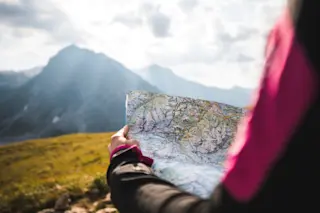(Credit: Blend Images/Shutterstock)
Blend Images/Shutterstock
Have you ever caught a whiff of perfume and found yourself grasping for the words to describe it? You might link the scent with a memory of an old romance, or a specific place – but when it comes to specific words for scents, the English language leaves us with a pretty limited toolbox. Though we can distinguish and name colors with acuity – crimson from scarlet from burgundy – we're largely limited to vague scent terms, like “smoky” or “sweet.” But do distinctions between odor seem equally blurry in other languages? Linguists Asifa Majid of Radboud University in the Netherlands, and Niclas Burenhul of Lund Universty in Sweden, suspected that this isn't the case – and with good reason. The researchers knew that in at least one language – Jahai, which is spoken by certain Malaysian groups – words for smells are far more ...













